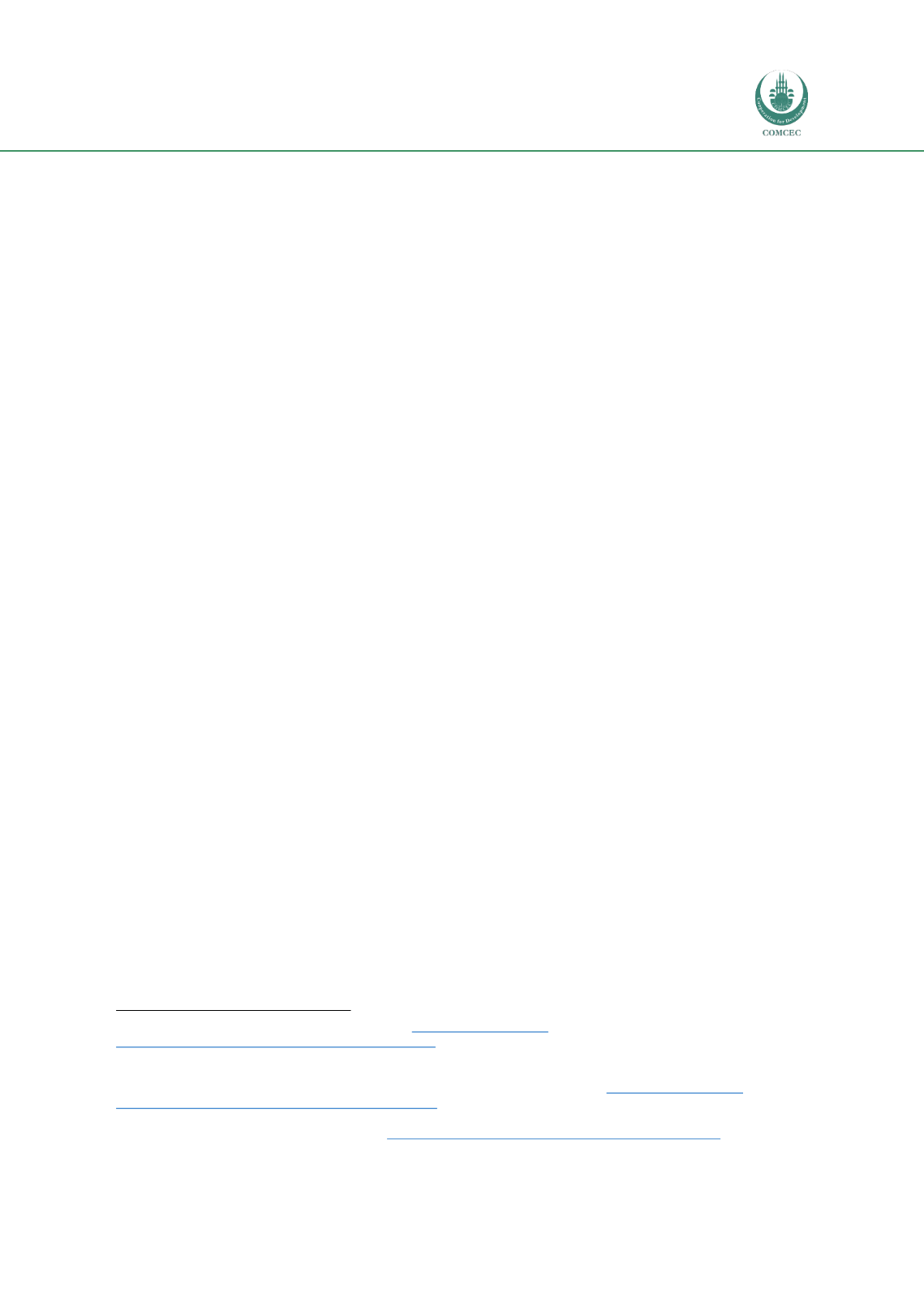

Improving Agricultural Market Performance:
Creation and Development of Market Institutions
133
is collected by the Ministry of Finance with the objective to (re)develop the palm oil industry
(e.g. replanting old trees and conversion to bio-diesel). The Indonesian Oil Palm Estate Fund
(BPDP-KS) supervises and operates the fund.
A similar export tax is levied on raw cocoa beans, which vary from 5% to 15% (depending on
the current world price of cocoa beans) and should encourage domestic fermenting industries
and upscaling of capacity as cocoa bean processing firms appear not operate at full production
capacity.
363
Distribution and Market
The fragmentation of Indonesia’s agricultural sector is caused by the many small-scale farmers
but certainly also to the country’s archipelagic geography encompassing more than 14,000
islands. Indonesia’s poor network of transport, communications, and public utilities
infrastructure, which has been characterized by years of under-investment.
364
This is further
complicated by the absence of multimodal or integrated infrastructure transport networks
(e.g. land, sea, and air),
365
which, in turn, further challenges time delivery, freshness, and
perishability of Indonesia’s agricultural products.
Logistics costs are high, which has resulted in poor distribution systems and which impedes
Indonesia’s overarching agricultural marketing system. For instance, shipping costs are
estimated to be 50% to 80% higher compared to other locations in Southeast Asia while 17%
of a company's total expenditures in Indonesia is absorbed by logistics costs vis-à-vis below
10% in peer economies.
366
Indonesia’s inadequate infrastructure system makes it more expansive than it should be to
distribute primary and raw commodities from production sites to processing facilities and on
to the market and retailers. Improving distribution channels and infrastructure has been
challenged by conflicts of interest (e.g. between provincial and district Governments) and the
decentralized nature of Indonesia’s Government structure.
Some initiatives have been developed to tackle these challenges. This includes a program
designed to increase the standards and quality of traditional markets in order to encourage
domestic consumption of fresh and perishable products at traditional markets as opposed to
more modern retail channels (e.g. supermarkets and hypermarkets).
367
The Ministry of Trade
supports traditional markets with physical revitalization. This program supports the
revitalization of 1,000 traditional markets per year and is intended to last five years.
Consumption and Trade
Indonesia produced a total of just over US$60 billion worth of food in 2014.
368
The country has
historically been a net exporter of agri-food products. In fact, Indonesia’s primary and semi-
363
Indonesia Investments (2017), Cocoa, available a
t https://www.indonesia- investments.com/business/commodities/cocoa/item241 [Accessed June 2017].
364
WTO (2013),
Indonesia Trade Policy Review Report by the Secretariat
, Geneva: World Trade Organization.
365
Interview conducted with Indonesian Agency for Agricultural Research and Development in Jakarta, July 11, 2017
366
Indonesia Investments (2017), Infrastructure Development in Indonesia, available a
t https://www.indonesia- investments.com/business/risks/infrastructure/item381 [Accessed June 2017].
367
Interview conducted with Ministry of Trade in Jakarta, July 14, 2017
368
FAO (2015), FAOSTAT Indonesia, available a
t http://fenixservices.fao.org/faostat/static/syb/syb_101.pdf [Accessed June
2017].


















